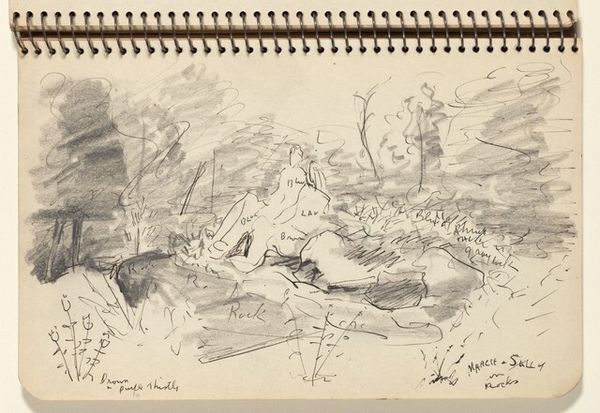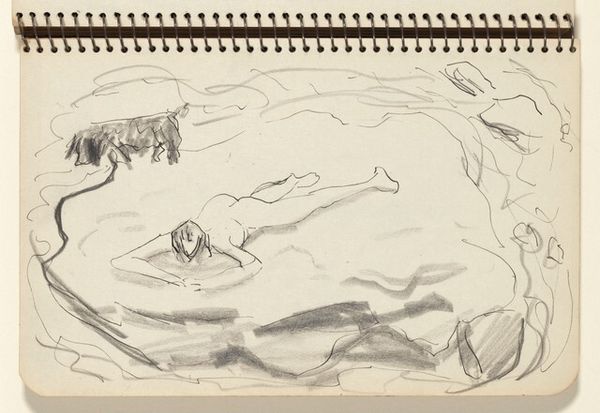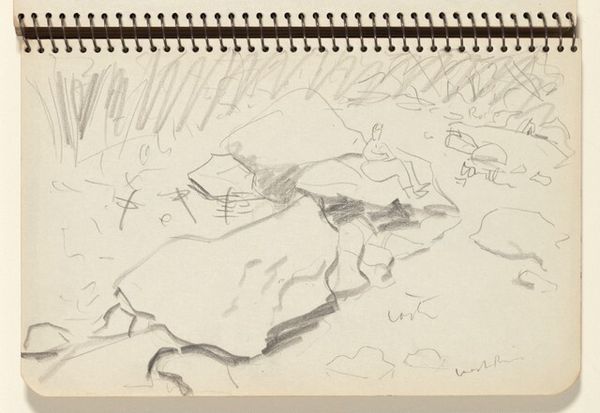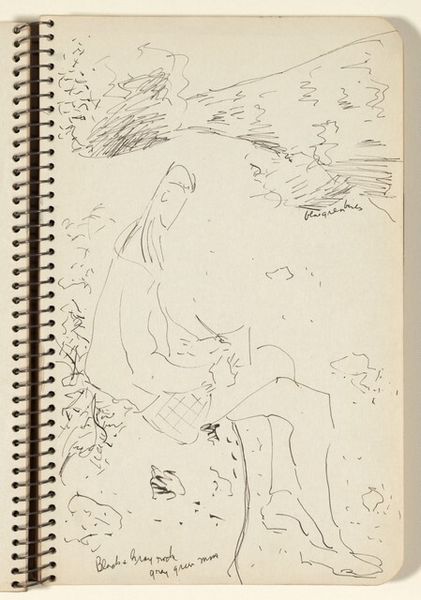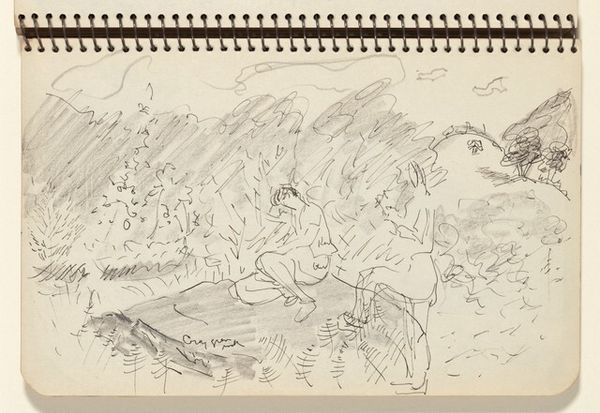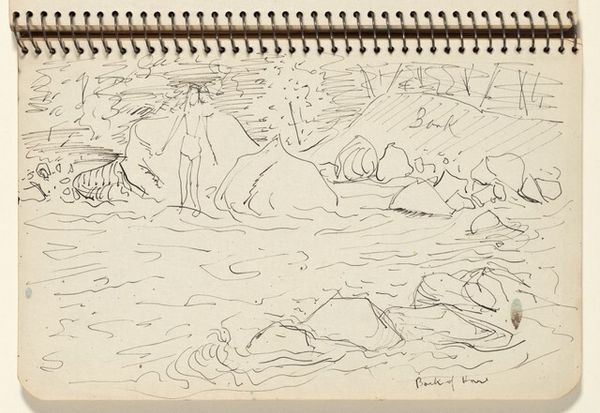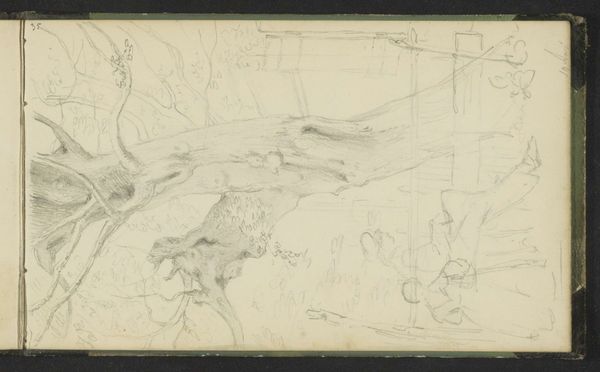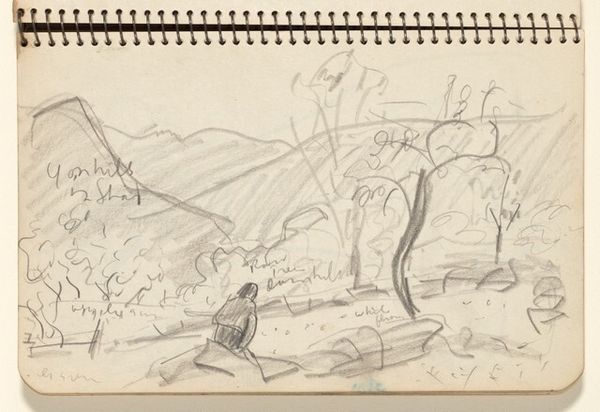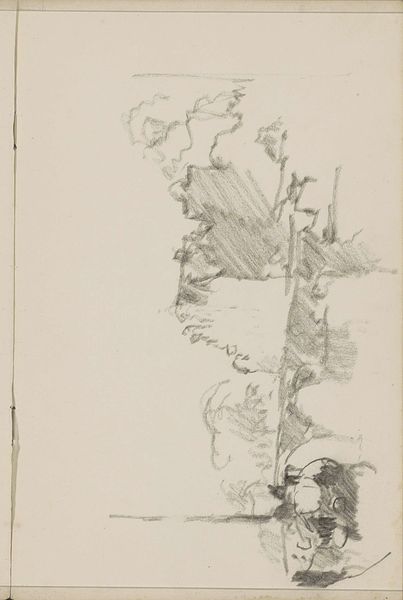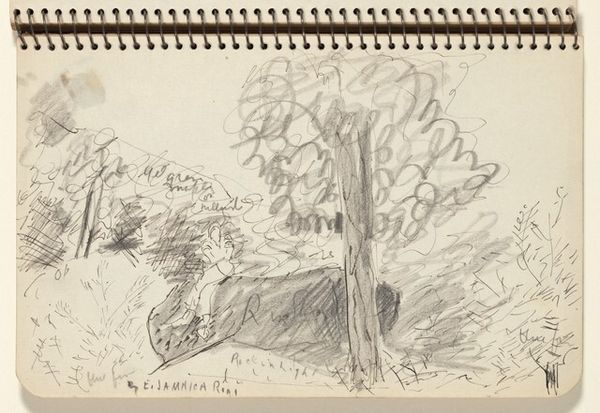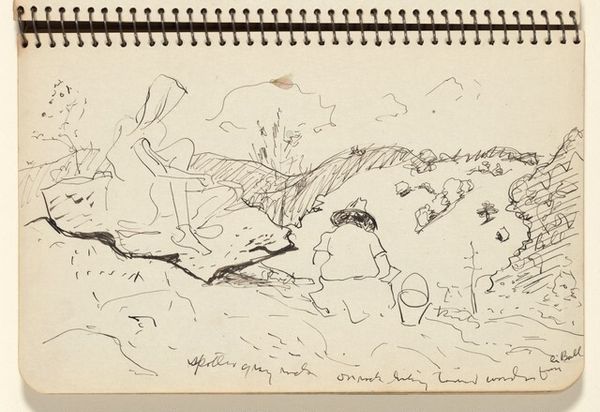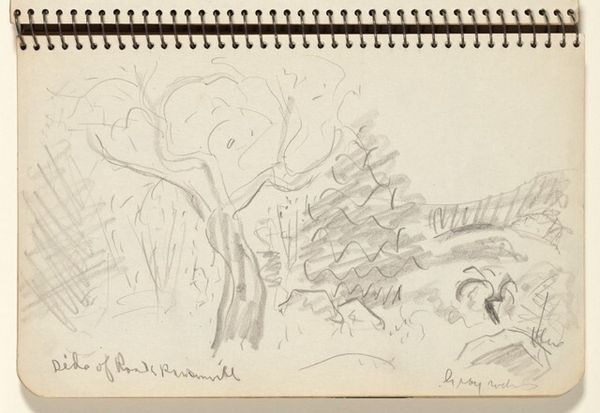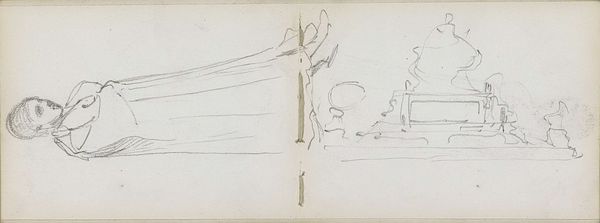
drawing, pencil
#
drawing
#
landscape
#
figuration
#
pencil
#
modernism
Dimensions: overall: 12.8 x 20 cm (5 1/16 x 7 7/8 in.)
Copyright: National Gallery of Art: CC0 1.0
Curator: Ah, yes, "Sally and March on the Rocks," a pencil drawing created by Milton Avery in 1943. It captures a moment in time, quite literally sketched on a notebook page. Editor: There's an almost melancholic feeling that emanates from the subdued grays. Are the figures looking out at something, longing for what's beyond the immediate foreground? Curator: It's fascinating how Avery's simplification of form translates. He’s really just distilled the essence of the scene, using minimal pencil strokes to capture the figures and their environment, the rocks. Editor: Yes, the process is completely evident; you can feel the texture of the paper through the varying degrees of pressure used. Were supplies scarce during that time, with artists making do, perhaps? Curator: Well, drawing allowed Avery the most direct access to immediate sensations— it became his primary means of observation, especially during vacations to places like coastal Maine. He worked quickly and without preconceptions. It allowed him freedom, you know? Editor: Makes you wonder about the story behind it— those seaside excursions, and the everyday materials readily to hand. What labor went into acquiring even basic artist supplies? Curator: Avery moved in a really interesting orbit in the art world. Although not directly involved in leftist art circles, many saw his work as a 'working class’ kind of art because of its unpretentious, accessible simplicity. Editor: I get it. In a world consumed with labor and capital, even leisure—like a family trip to the beach—becomes enmeshed within the sphere of production. Avery has managed to crystallize a real place of serenity despite this inescapable reality. Curator: He managed to wring poetry out of the mundane. You’re so right: it shows us a real truth within the art of making. Editor: Yes, and as simple as the piece looks, I’ll think about its complex interrelations. The paper and graphite— the history of making involved and what Avery does with them…fascinating.
Comments
No comments
Be the first to comment and join the conversation on the ultimate creative platform.
